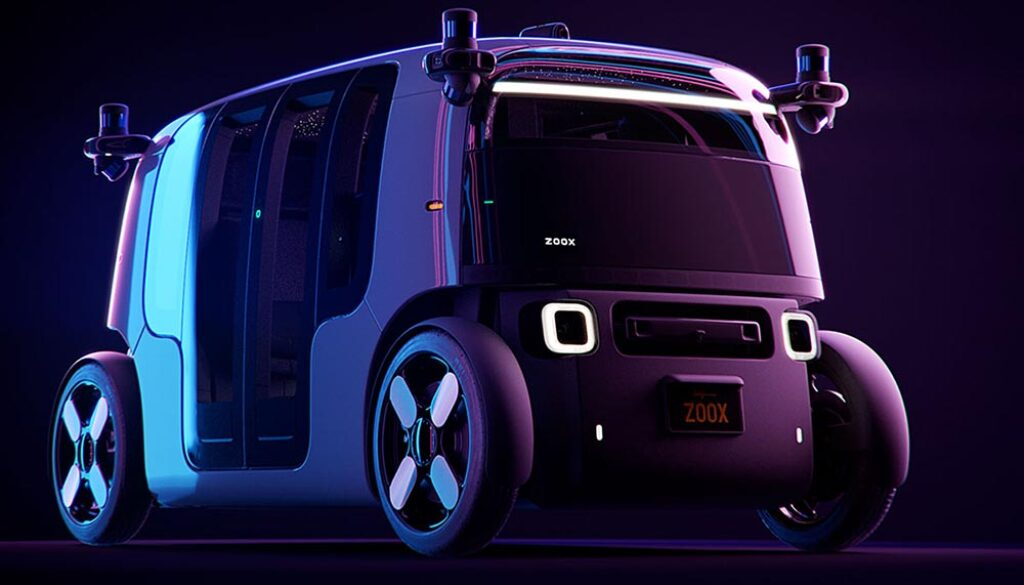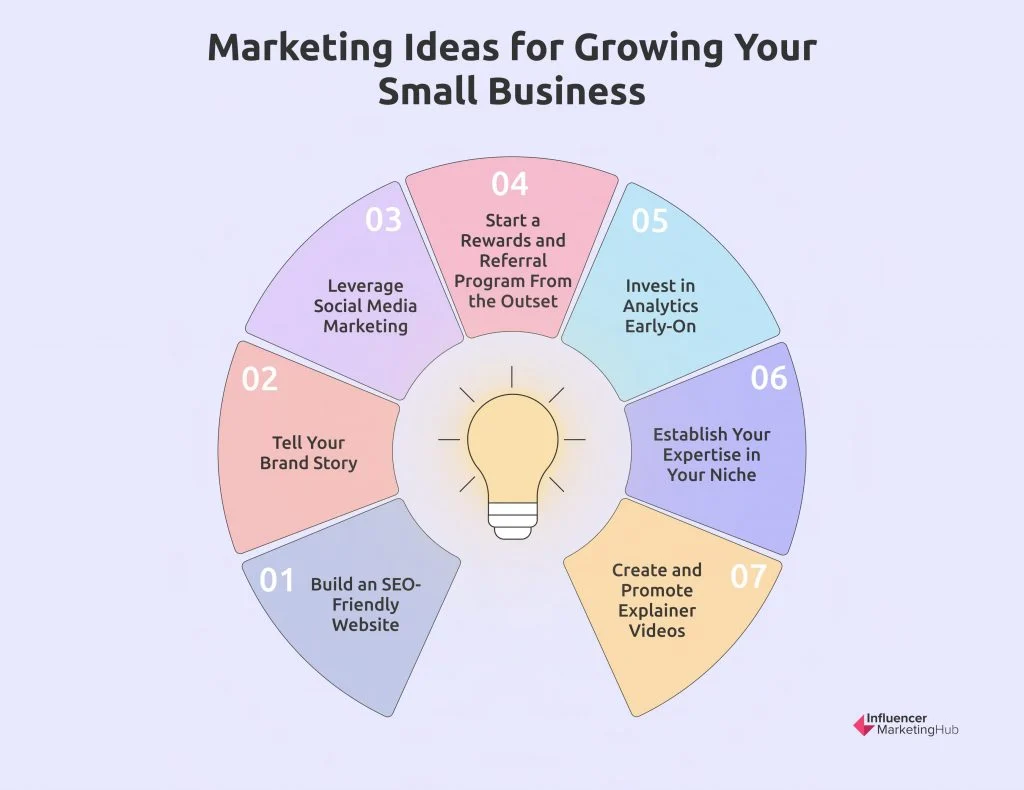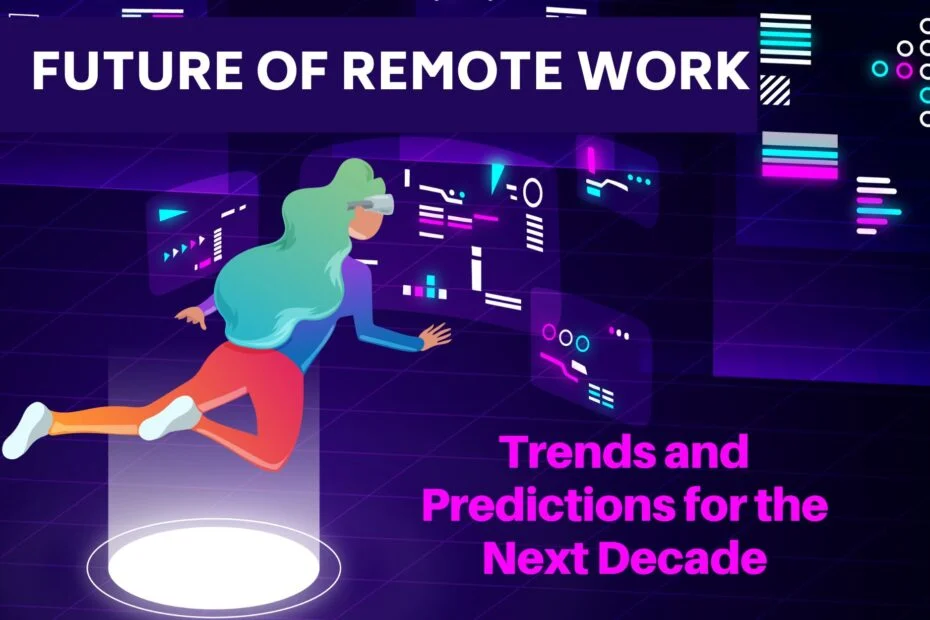Amazon’s robotaxi initiative, powered by their cutting-edge subsidiary Zoox, is set to take off with testing in Los Angeles, a city known for its dense traffic and vibrant urban environment. As part of Zoox’s commitment to revolutionizing self-driving technology, this testing phase marks a significant step towards the future of autonomous vehicles. The modified Toyota Highlanders will be operated with human drivers initially, as Zoox gathers valuable data to enhance safety features and performance. With the robotaxi rollout, Amazon aims not only to provide eco-friendly transportation alternatives but also to establish a strong presence in the burgeoning ride-hailing market. This initiative aligns with competition from major players like Waymo, emphasizing the rapid advancements and potential of robotaxis in urban mobility.
In the realm of autonomous transport solutions, the Amazon robotaxi project emerges as a pioneering venture that seeks to integrate innovative self-driving capabilities into everyday life. With Zoox testing its vehicles in the bustling streets of Los Angeles, the initiative aims to redefine how residents engage with transportation technology. Through the deployment of advanced autonomous vehicles, which are designed to operate without human intervention in the long run, Amazon is positioning itself at the forefront of the autonomous driving movement. The robotaxis represent not just a shift in mobility, but a comprehensive approach to modern urban challenges, combining safety, efficiency, and the convenience of on-demand services. As other companies compete in the self-driving space, Amazon’s strategic push through Zoox could pave the way for a transformative era in passenger transport.
Amazon’s Robotaxi Initiative: The Future of Urban Transportation
Amazon is making strides in the realm of urban mobility with its robotaxi initiative, driven by its subsidiary Zoox. The launch of testing in Los Angeles marks a pivotal moment for the company as it seeks to establish itself in the competitive self-driving technology market. The modified Toyota Highlanders set to grace the city streets are not only a testament to innovative engineering but also represent a multi-billion dollar investment in the future of autonomous vehicles. As cities globally embrace the shift towards intelligent transportation systems, Amazon’s approach could redefine the way residents of Los Angeles commute, paving the way for a future where autonomous vehicles become an integral part of daily life.
The Amazon Zoox initiative is not just about developing self-driving cars; it’s about creating a robust ecosystem that integrates technology, regulation, and public needs. Testing in Los Angeles, which is known for its complex traffic patterns and diverse neighborhoods, will provide Zoox with the critical data needed to enhance their autonomous driving algorithms. While other companies like Waymo are already deploying driverless taxis, Zoox’s commitment to ensuring safety with human oversight during these initial phases indicates a cautious yet ambitious approach. This emphasis on safety, coupled with the goal of eventually eliminating human drivers, aligns with the broader industry narrative of advancing trusted self-driving technology.
Zoox Testing in Los Angeles: Key Insights and Developments
Zoox’s impending vehicle testing in Los Angeles involves deploying modified Toyota Highlanders equipped with human safety drivers, a strategy designed to ensure user safety while data is collected to improve self-driving capabilities. The vehicles will execute manual mapping missions to understand the unique challenges of urban driving in Los Angeles, a city known for its dense traffic and varied road conditions. By focusing on specific areas for testing, Zoox aims to refine its technology to handle the intricate routes that characterize the City of Angels, laying vital groundwork for the eventual rollout of autonomous ride-hailing services.
This pilot phase, although not offering public rides, highlights Zoox’s strategic planning. The company is carefully navigating regulatory landscapes, crucial for securing operational permissions in a city that is already witnessing the integration of autonomous vehicles into its transport network. Analysts suggest that this level of preparedness and responsiveness to regulatory environments will play a key role in Zoox’s success once the technology is deemed ready for commercial use. As Zoox prepares to expand its operations towards Las Vegas and San Francisco, the learnings from Los Angeles will be invaluable.
The Intersection of Technology and Safety in Robotaxi Operations
Safety is paramount in the development of autonomous vehicles, and Zoox is taking this commitment seriously. Their robots are equipped with more than 100 innovative safety features designed to prevent accidents and enhance passenger protection. This focus on safety aligns with research that indicates driverless vehicles could potentially reduce collision risks compared to traditional cars. Understanding how to successfully integrate autonomous taxis into urban environments without compromising public safety is a challenge that Zoox aims to tackle, setting them apart in the crowded arena of self-driving technology.
However, the path to safety in self-driving technology is not without its hurdles. For instance, as seen with other companies like Waymo, despite technological advancements, incidents still occur, raising concerns about reliability. Zoox’s strategy of deploying human drivers during tests serves as a buffer to build trust in their autonomous vehicle systems. By working closely with regulatory bodies and prioritizing safety, Zoox is laying the groundwork for future acceptance of fully autonomous robotaxis, ensuring that both passengers and pedestrians feel secure in this new transportation paradigm.
The Future of Self-Driving Technology: Market Trends and Competition
The race towards fully autonomous vehicles is intensifying, with major players like Waymo and Tesla setting benchmarks in self-driving technology. In this competitive landscape, Amazon’s Zoox stands poised to make its mark through thoughtful and strategic testing in critical cities like Los Angeles. By choosing to involve human drivers during the initial testing phases, Zoox aims to collect data that not only aids in rapid technological development but also cultivates a sense of trust among potential future riders. This calculated approach allows Zoox to adapt its services based on real-time feedback and the driving dynamics unique to each city.
As Zoox transitions to testing and potential public launches, the company’s long-term vision reflects an understanding of market needs and trends. The demand for convenient and efficient transportation solutions is rising, and the integration of robotaxis into daily life could provide an efficient alternative to traditional driving and ride-hailing services. With competitors constantly refining their offerings, Zoox’s focus on rider experience, safety, and navigating complex urban environments will be essential for establishing itself as a leader in the autonomous vehicle market.
Navigating Regulations: The Key to Successful Autonomous Vehicle Deployment
One of the most significant challenges Zoox faces as it tests its vehicle fleet in Los Angeles is navigating the complex web of regulations governing autonomous vehicles. Regulatory frameworks often vary widely from one region to another, requiring companies to remain agile and informed as they plan their testing and operational strategies. In Los Angeles, this means complying with local traffic laws while also addressing public safety concerns and building partnerships with local authorities. Zoox’s strategy includes committing to transparency and community engagement to foster a positive perception of self-driving technologies.
The pursuit of regulatory approval is not merely a bureaucratic hurdle but a vital component of building a trustful relationship with the public. Ensuring that the involved authorities are well-informed about Zoox’s goals will help pave the way for smoother operational transitions once the technology is ready for public use. By being proactive in discussions with policymakers and community stakeholders, Zoox will not only enhance its operational viability but also contribute to shaping the future regulatory landscape for robotaxis and autonomous vehicles.
Design Innovations in Zoox’s Pill-Shaped Robotaxis
Zoox is continuing to redefine what an autonomous vehicle looks like with its innovative pill-shaped design, which departs from traditional vehicle layouts. This novel design aims to create an interior that feels less like a conventional taxi and more like a comfortable, communal space for passengers. With seating arrangements that encourage togetherness and large windows for views, Zoox is focusing on enhancing the overall passenger experience, catering to the growing demand for personalized and enjoyable travel.
Furthermore, the incorporation of advanced technology, such as lidar sensors, allows the Zoox robotaxis to navigate urban environments seamlessly. This emphasis on user-centric design and the technological sophistication of their vehicles will be essential in distinguishing Zoox from its competitors in the autonomous driving industry. As the company moves closer to launch, the successful implementation of these designs could serve as a key selling point for attracting potential users and establishing brand loyalty in a competitive landscape.
The Impact of Autonomous Vehicles on Urban Mobility
The integration of robotaxis into urban mobility landscapes is set to transform daily commutes and alter the very fabric of city life. By providing autonomous ride-hailing services, companies like Zoox have the potential to significantly reduce traffic congestion, decrease emissions, and enhance accessibility for underserved areas. With the enhanced safety and efficiency posed by self-driving technology, urban planners and policymakers are increasingly pushing for solutions that incorporate autonomous vehicles as a core component of the public transportation ecosystem.
Moreover, as cities grapple with rapid population growth and the associated transportation challenges, the introduction of Amazon’s robotaxi services could provide a more sustainable alternative to car ownership. This shift towards shared, autonomous mobility options can lead to more efficient land use and create opportunities for greener urban development. Zoox’s initiative represents not just a technological advancement but a strategic move towards reimagining what urban transportation could look like in the near future.
Consumer Acceptance: Building Trust in Autonomous Mobility Solutions
For Zoox and other companies in the autonomous vehicle space, consumer acceptance is critical to the success of robotaxi services. Building trust in a technology that fundamentally changes the way people travel will require transparent communication and demonstrable safety records. By launching in markets like Los Angeles, where there’s already a familiarity with alternate forms of transportation, Zoox can tailor its messaging to local consumers while engaging with them through community outreach and education initiatives.
Additionally, generating positive experiences during the testing phase, even with human drivers behind the wheel, will be essential for building rapport with potential riders. As Zoox prepares to ramp up its public rollout, driving public awareness campaigns that highlight the safety, convenience, and unique offerings of their robotaxis will be crucial in winning over skeptics. Understanding consumer concerns and addressing them proactively will also pave the way for greater acceptance and trust in autonomous mobility solutions.
The Future of Amazon’s Invested Interests in Autonomous Driving Technology
Amazon’s strategic investment in Zoox encapsulates a forward-thinking vision for transportation and logistics. As the company continues to refine its autonomous technologies, there is significant potential for these innovations to extend beyond passenger transport into delivery services. The use of robotaxis for efficient cargo deliveries could streamline Amazon’s operational capabilities, reducing dependence on traditional delivery logistics while also minimizing costs. This dual application of technology reinforces Amazon’s commitment to leadership in the rapidly evolving self-driving market.
Moreover, as various urban centers begin to embrace autonomous driving, Zoox’s technologies may adapt to serve multiple business models, including ride-sharing and smart delivery systems. The elasticity of these innovations presents Amazon with opportunities to explore uncharted avenues for growth and revenue stream diversification. By effectively leveraging Zoox’s advancements in self-driving technology, Amazon not only positions itself ahead of competitors but also prepares for a future where autonomous vehicles may dominate urban landscapes.
Frequently Asked Questions
What is the Amazon robotaxi initiative with Zoox?
The Amazon robotaxi initiative is led by Zoox, an autonomous driving technology company owned by Amazon. It aims to develop and test self-driving vehicles, with plans to eventually offer a commercial ride-hailing service using autonomous vehicles designed for urban environments.
Where is Zoox testing its robotaxis?
Zoox is currently testing its robotaxis in Los Angeles, marking it as the sixth testing location for their autonomous vehicles. The testing involves modified Toyota Highlanders with human drivers, focusing on establishing routes and gathering data for future ride-hailing services.
How does Zoox’s self-driving technology work?
Zoox’s self-driving technology utilizes advanced sensors and lidar, enabling its vehicles to navigate complex urban environments autonomously. Their unique vehicle design features no driver’s seat or gas pedal, with passengers seated facing each other, prioritizing comfort and safety.
Are Zoox robotaxis safe for public use?
While Zoox robotaxis are not currently available for public rides, the company emphasizes safety with over 100 innovations to prevent collisions. Data from similar autonomous systems, like Waymo, suggests that self-driving technology can potentially be safer than traditional driving.
What are Amazon’s long-term plans for robotaxis and autonomous vehicles?
Amazon’s long-term plans for autonomous vehicles may include expanding the use of Zoox robotaxis for commercial ride-hailing services, as well as leveraging self-driving technology for efficient delivery solutions, enhancing their logistics network.
When will Zoox start offering public rides in its robotaxis?
Currently, Zoox does not have a set date for offering public rides in its robotaxis. The focus remains on testing and refining their technology in Los Angeles, with potential public promotions planned for Las Vegas and San Francisco later this year.
How do Zoox’s robotaxi features differ from traditional vehicles?
Zoox’s robotaxis feature a distinctive design that eliminates the driver’s seat and includes slices for passenger comfort with innovative layouts. They are built to operate autonomously, leveraging state-of-the-art sensors like lidar for navigation in urban settings.
What potential impact do Amazon robotaxis have on urban mobility?
Amazon’s robotaxis have the potential to revolutionize urban mobility by offering convenient, on-demand ride-hailing solutions that could reduce traffic congestion, lower transportation costs, and decrease the need for personal vehicle ownership.
How does Zoox’s robotaxi testing compare to competitors like Waymo?
While Zoox is beginning its testing phase in Los Angeles, competitors like Waymo have already launched operational robotaxi services. Zoox aims to establish a unique, fully autonomous ride-hailing service distinct from existing models, emphasizing safety and passenger experience.
What innovations are part of Zoox’s robotaxi safety features?
Zoox’s robotaxi safety features include over 100 safety innovations, such as advanced obstacle detection systems, enhanced passenger protection designs, and automated emergency response functions, which are designed to exceed those found in traditional vehicles.
| Key Points | Details |
|---|---|
| Testing Initiation | Amazon’s Zoox will begin testing robotaxis in Los Angeles in summer 2025. |
| Testing Vehicles | Modified Toyota Highlanders with human drivers will be used during the tests. |
| Testing Locations | This will be Zoox’s sixth testing site, joining other cities like San Francisco and Las Vegas. |
| Regulatory Approval | Commercial services are pending regulatory approval; public rides not offered during testing. |
| Vehicle Design | Zoox is developing vehicles oriented for passenger comfort, featuring sliding doors and no steering wheel. |
| Safety Innovations | Zoox vehicles feature over 100 safety innovations compared to traditional cars. |
| Future Plans | Amazon aims to utilize autonomous technology for ride-hailing and potentially for deliveries. |
Summary
Amazon’s robotaxi initiative marks a significant step towards the future of transportation, with plans to test their autonomous vehicles in Los Angeles. As part of their strategy, Amazon-owned Zoox will introduce modified Toyota Highlanders equipped with human drivers for a safer testing phase. This initiative not only emphasizes the company’s commitment to advancing self-driving technology but also aims to enhance urban mobility. The successful implementation of robotaxi services could revolutionize the way we think about transportation, leading to reduced traffic and improved convenience for city dwellers.



